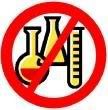So Clean, It’s Sickening
by author Michael Downey, BSc
After centuries of using simple cleaners–and elbow grease–synthetic compounds invaded our homes half a century ago. Now, cleaners are the most hazardous chemicals in your home. And because these compounds are not dispersed as easily indoors as outdoors, concentrations of toxic chemicals are higher in your home than outside--some more than 100 times higher, according to a United States Environmental Protection Agency (EPA) report. Ironically, our health may require us to return to our original products.
Sales of household products–laundry detergent, cleaners and such–run about $100 billion a year worldwide, with the US comprising 25 percent of the total. More than 150 chemicals found in the average home are linked with allergies, birth defects, cancer and psychological abnormalities, says the US Consumer Product Safety Commission.
Everyone who has added chlorine bleach to laundry knows it’s impossible to use cleaning chemicals and not breathe in at least some of the fumes. Some might know that the skin is another common route for chemical exposure. Less well known is the fact that this exposure can greatly harm the body.
Remember: Warning words--such as danger, caution and poisonous–pertain only to immediate hazards. The labels don’t indicate the effect chemicals have on long-term human and environmental health.
Health Risks
So what health risks lie in the cleaning products under your sink? And what can you do to avoid them?
Phosphates–found in laundry and dishwater detergents–are non-irritating but create unbalanced ecosystems by fostering dangerously explosive marine plant growth.
Sodium hypochlorite, or chlorine bleach, is a lung and eye irritant. Mixed with ammonia or vinegar, it can cause asthmatic symptoms and serious respiratory problems. It creates cancer-causing compounds in water.
Petroleum distillates, found in metal polish and other cleaners, can cause temporary eye clouding. Longer exposure can damage the nervous system, skin, kidneys and eyes.
Ammonia, most common in glass cleaner, is a lung and skin irritant. Mixed with bleach, it can produce chloramine gas, which causes choking and lung damage.
Disinfectants, such as phenol and cresol, can cause diarrhea and kidney and liver damage.
Furniture polishes contain nitrobenzene, which is linked with shallow breathing, cancer and birth defects.
Carpet cleaners and spot removers contain perchloroethylene. This eye, skin and lung irritant can cause liver and kidney damage if ingested and is considered a probable human carcinogen.
Toilet bowl cleaners emit naphthalene fumes, which can cause liver and kidney damage if ingested. These cleaners contain aradichlorobenzene–a probable cause of
cancer–and acids that can cause blindness.
Cleaners containing citrus can claim to be "natural." But often d’limonene, a known sensitizer, is the active ingredient. The US Department of Health reports that d’limonene can be more toxic than toluene–which can damage bone marrow, liver and kidneys.
Fabric softeners and dryer sheets contain chemicals such as chloroform and benzyl acetate that are neurotoxic and carcinogenic, and can cause nausea, vomiting and convulsions. You can be exposed through inhalation or skin contact from dryer exhaust or from treated clothes, sheets and towels.
And that’s just the short list of health problems. These chemicals persist in the environment, poisoning marine life and mammals, and saturating soil and water tables. And if you have a septic tank, chemical laundry products can wipe out the bacteria required to make the tank work properly.
Eco-Friendly Shopping
Choosing eco-friendly cleaning products–and removing toxic ones–goes a long way toward ensuring a home with fresh, clean air. You can reduce your household’s toxic burden on your health and the environment by following
these steps.
Get rid of all products with harmful ingredients such as sponges with antibacterial ingredients and cleaning products with labels using words such as warning, caution, corrosive or danger.
Replace them with non-toxic, biodegradable substitutes from natural food stores.
Avoid disinfectants and bleaches; ask about natural alternatives at health food stores.
Reuse old shirts as rags and more. Use cloth rags instead of paper towels to save trees–and save money.
Plants can lower air pollution and add oxygen to indoor air.
Until you become practised at reading labels, the easiest way to choose a safe cleaner is to steer clear of cleaners at supermarkets and drugstores–except for baking soda.
At most natural product stores, knowledgable staff will help you find a host of non-toxic, environmentally safe cleaning, polishing and air freshener options.
Virtually all of these products are non-toxic, child safe, biodegradable (breaks down safely in the environment), hypoallergenic (doesn’t cause allergic reactions), cruelty-free (produced without cruelty to animals), septic-tank safe and packaged in recycled materials.
What About those High Prices?
Betty Norton, supplements manager at Lifestyle Markets on Douglas Street in Victoria, says that concentrated forms of eco-friendly cleaners are not as expensive as they seem. They dilute, furnishing much larger quantities.
Concentration is part of the green cleaners’ environmental strategy. A concentrated cleaner requires less packaging to deliver the same results. All you might need of a green cleaner is one tablespoon, whereas the mainstream counterpart would use one-quarter to one-half cup.
You can be sure they’re safe--barring unique allergies. And if you forget why choosing eco-products can be a lifesaver, Norton sums it up clearly: "Our skin absorbs all the substances it comes into contact with–so you don’t want to be handling toxic substances."
Based in Toronto, Michael Downey is a nutritionist and writer whose work appears in natural health magazines and in the health sections of a number of US and Canadian newspapers.

Friday, October 26, 2007
Subscribe to:
Post Comments (Atom)

No comments:
Post a Comment